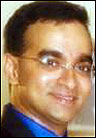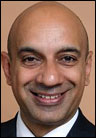Having concluded what it deems the world’s largest Near Field Communication (NFC) contactless payment pilot, Citibank indicates it believes there is strong consumer demand for mobile payment solutions. But with a scarcity of available NFC-enabled phones, alternatives such as NFC stickers or microSD cards may be necessary in order to get NFC deployments off the ground, the company reports.
The pilot included 3,141 Citibank credit card holders who, at the company’s initiation, purchased Nokia NFC-enabled 6212 mobile phones from participating Nokia shops, to pay for goods at 250 merchant locations in Bangalore (Bengaluru), India. Nearly 50,000 payments were completed throughout the 26-week span, which began in July 2009, and participants made purchases more frequently, spending a greater amount with each transaction while using the mobile phones than they did using ordinary credit cards (see Citibank Says High Volume NFC Pilot Shows Strong Usage).
According to a report written to evaluate the pilot results, many consumers were willing to utilize the technology (in fact, there were more volunteers than there were available phones). The report, entitled “Citi Tap and Pay mobile NFC proximity payments pilot—Bengaluru, Results & Findings,” was authored by representatives of Edgar Dunn and Co., a strategy consulting firm specializing in financial services and payments.
“We’re delighted by the results,” says Satish Menon, the executive VP of Citi Growth Ventures (the Citibank team that led this pilot with Citibank India). “The usage and spending story is very significant.” The study compared the purchase behaviors of a control group of non-adopters (those without the NFC-enabled phones), self-adopters (customers who had joined the pilot without having been solicited to do so) and solicited adopters. Among non-adopters, there was a 7.1 percent increase in quantity compared with purchases previously made using a credit card. Self-adopters had a 329 percent purchase increase, while solicited adopters had a 96 percent increase. The purchase value also grew, with self-adopters increasing their purchases’ value by 232 percent and solicited adopters raising it by 55 percent. Each group’s spending habits were compared against their credit card spending habits prior to using the NFC system.
On the other hand, the report finds that while there is a clear demand for mobile contactless payments, the lack of available NFC-enabled phones must be addressed. The Nokia 6212 phone, utilized in the Bangalore pilot, was largely perceived as outdated, compared with non-NFC mobile phones available on the market. “Most people in markets where NFC can realistically be deployed [that is, the markets where merchants are equipped with NFC-enabled sales terminals] have gone beyond basic mobile phones,” the study indicates, “and are unlikely to carry a second handset just for making payments, which defeats the primary objective of offering convenience to customers… Instead of enabling only a few handset types with NFC, there needs to be a concerted commitment from device providers to include NFC as a regular feature on all types of mobile phones.”
Until that happens, the authors suggest, NFC pilots should continue, as well as permanent deployments—but those wishing to offer contactless payment systems must seek alternative solutions, such as NFC-enabled stickers to attach to cell phones, or microSD cards that can be inserted into the phones to provide them with NFC functionality (see Customers Tap and Pay in Sao Paulo and MicroSD Card Brings NFC to Phones for Credit Card Companies, Banks).“At some point, customers will have quick and inexpensive options to add NFC to their existing handsets, or buy a top-of-the-line NFC-enabled handset,” says Samee Zafar, Edgar Dunn’s director. “Even plain stickers with limited functionality can serve as a steppingstone for unlocking the hidden demand for contactless payments. Many bankers regard this as not strictly mobile-phone payment, as one can put the sticker on anything. However, from a customer’s perspective, it would serve as a mobile-phone transaction—and influencing customer perception is always the most important factor when thinking of new product ideas.”
For the pilot, customers either were directly solicited in phone calls, or signed themselves up after viewing promotional materials regarding the service. Participation was available to Citibank credit card holders who were also Vodafone mobile subscribers and Bangalore residents. Participants first purchased Nokia 6212 mobile handsets, and employees at the Nokia store assisted them in downloading the ViVOtech software application they would need to enable the NFC payment system, by linking data at the point of sale over the air on the handset to the user’s account. Merchants also utilized ViVOtech contactless terminals at their stores. MasterCard supported the pilot with advice and expertise gained from other NFC pilots from across the globe, and provided the PayPass certification for the payment process.
A user could take the phone to a store and, at the point of sale, tap it against a payment terminal. He or she then entered a four-digit password, and the payment was complete. During the pilot, there was a waiting list of customers requesting to participate in the program. In fact, 3,141 phones were sold, while nearly 4,000 were requested. The total value of all purchases made on the phones was 26 million rupees ($571,000).
Promotion was an important element in the pilot, and was intended to gain consumers’ attention before the pilot even started. A teasing phase was launched first, in which marketing material (such as the simple word “tap”) was posted in stores, as well as on billboards. This was followed by an education phase, providing live demonstrations to customers in order to explain how the system worked. Well-known grocery outlets participated, as did fast-food chains, accessory stores and bookshops. What’s more, smart posters were placed at locations in which pilot participants could use the Nokia phones to pick up mobile coupons that could then be spent elsewhere.
Customers indicated they signed on for the enhanced convenience, security and the “cool factor,” and reported that the transactions were quick, painless and faster than non-NFC-enabled payments. Bangalore residents who received offers by phone to participate in the pilot, but who subsequently chose not to do so, said they opted out due to the timing of marketing calls, in addition to local language barriers between the telemarketer and the residents. After joining, some customers complained that the handset did not meet their expectations, while some felt merchant coverage should have been greater, and that the store’s staff should have been better trained to assist customers.
“The valuable insights and learning provided by the pilot should be utilized to roll out the pilot in other cities in India or indeed in other global markets as well,” the study found. The report’s authors also found that combining NFC technology use with loyalty campaigns could contribute to the program’s success.Incentives were offered as well, to raise greater interest in the program. Phones cost 5,000 rupees ($110) apiece, which was a discount from the regular price (slightly more than twice that amount). Customers also received approximately 2,500 rupees ($55) in cash upon completing six NFC purchases. After six more purchases, the participants received the same amount once more. About 18 percent of those taking part in the pilot made exactly 12 payments to qualify for the cash payments. However, 68 percent were active beyond the initial 12 payments.
According to the report, users were most commonly young men between ages 26 and 35, with an annual income of 720,000 rupees ($15,720). These customers typically used credit cards for making purchases, but paid cash for groceries and fuel.
The pilot broke new ground, the study found, because of its size—the largest NFC contactless payment pilot in the world to date, according to Citibank. It was also noteworthy for the aggressive marketing campaign, and for the customer service provided from workers at the Nokia stores.
“We’re seeing a very healthy trend,” Menon says, which shows a strong interest in NFC technology, though he adds that in order to make contactless payment ubiquitous in India—or worldwide—the mobile phone vendors will need to meet the demand for NFC-enabled phones. “We would like to see it tomorrow morning, of course,” he says. In the meantime, however, Citi would consider alternative solutions, such as NFC stickers or microSD cards. According to Menon, the company intends to embark on further pilots, though he declines to say where or when. “The whole world is our canvas in that sense.”
The pilot in Bangalore, Zafar says, “shows that NFC technology can influence customer behavior positively and significantly with the right mix of smart marketing, attractive incentives and good execution.” He adds that “NFC is the next wave—it’s a matter of choice. One can get into the game early, learn and develop a strong position as the market develops, or sit on the sidelines and have a lot of catching up to do later.”



